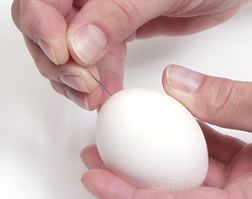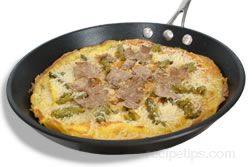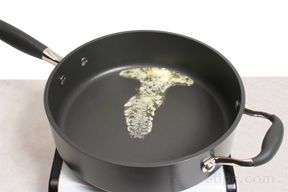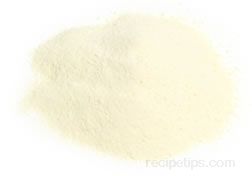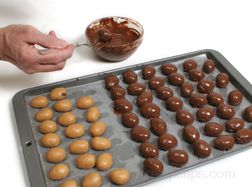|
Scrambling is a method of cooking an egg in a sauté pan in which the white and the yolk are blended together. It is, perhaps, the easiest method for cooking eggs and one of the most popular. | |
| To begin the process, crack several eggs into a bowl (use about two large eggs per serving). Beat the eggs to combine the whites and the yolks. A fork is one of the best utensils to use for this process. Simply rotate the fork rapidly in a vertical motion similar to turning a side crank on a winch, only the rotation is much tighter. This motion lifts the eggs out of the bowl with each rotation, adding air into the eggs, providing them with a slightly lighter consistency and a bit more volume. | 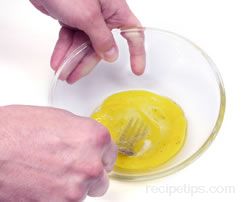 |
| Add a small amount of butter to a metal or nonstick sauté pan that has been placed on moderately high heat. The butter should foam and bubble, but it should not turn brown. If the butter browns rapidly and begins to smoke, it is an indication that the heat is too high. In this case, it is best to begin the process again by removing the butter, wiping the pan, lowering the heat, and adding a new pat of butter to the pan. Using butter that has burned can give the scrambled eggs a smoky burnt flavor, which can be quite unappetizing. |  |
| After the butter has melted and has heated for a few seconds, add the lightly beaten eggs to the pan. | 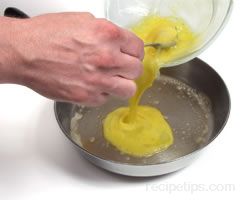 |
| Slowly stir the eggs in the pan to prevent the eggs from becoming one large flat congealed mass. A spatula works well for stirring the eggs because it also allows you to scrape the bottom of the pan during the cooking process in order to prevent the eggs from sticking to the pan. Wooden spoons or rubber spatulas are also quite useful for stirring the eggs. |  |
| When the eggs begin to congeal, they will finish cooking very rapidly. When two or three eggs are scrambled, one minute or less is all that is required for the total cooking time; therefore, it is important to watch the eggs carefully. A larger quantity of eggs will require several more minutes to complete the cooking process. | 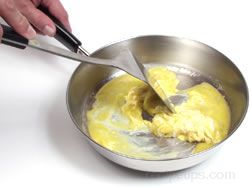 |
| It is best to remove the eggs from the heat source when they are still very moist, because the internal heat of the eggs will complete the cooking process. A sure sign of overcooking is when the scrambled eggs have become very dry. When this happens, the flavor and texture will not be as pleasing as eggs that have retained moisture and volume. |  |
|
Serve the scrambled eggs immediately after cooking; however, if the eggs must be held for a lengthy period, it is best to cover the pan and place it in a hot water bath to keep the scrambled eggs warm. If you attempt to keep the eggs warm by leaving the pan on the stove, even at the lowest heat setting, the eggs may dry out rapidly. | |
| The eggs are most often seasoned with salt and black pepper, but of course, this is optional. Other seasonings and flavoring ingredients can be used as well, such as chopped onions, peppers, or tomatoes. Scrambled eggs have become a popular menu item for breakfast, but they can be served at any meal accompanied by your favorite side dishes. |  |
Loading
Scrambled Eggs

Read Reviews (1)

Provided By
RecipeTips
RecipeTips
Reviewed By RTMember13138
"Good one, good cooking advice for delicious eggs, via you (:"
"Good one, good cooking advice for delicious eggs, via you (:"

Loading

Reviewed By RTMember13138
"Good one, good cooking advice for delicious eggs, via you (:"
Advertisement
Advertisement


